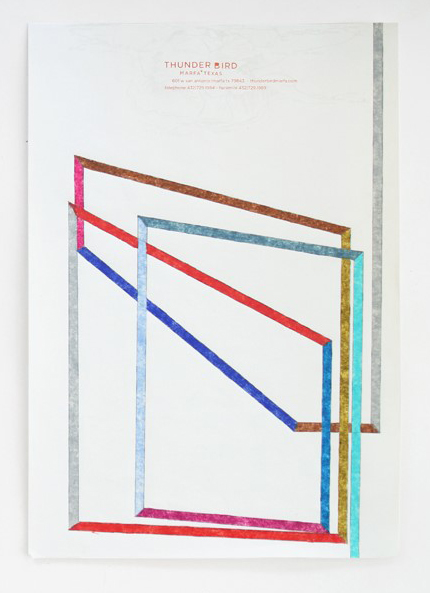Leonardo Bravo
'Tongue and Groove, Pt. 2’, 2012
8.5 in x 11 in, color pencil on paper
Price: $300

'Tongue and Groove, Pt. 1’, 2012
8.5 in x 11 in, color pencil on paper
Price: $300

"I love going out of my way, beyond what I know, and finding my way back a few extra miles, by another trail, with a compass that argues with the map.nights alone in motels in remote western towns where I know no one and no one I know knows where I am, nights with strange paintings and floral spreads and cable television that furnish a reprieve from my own biography, when in Benjamin's terms, I have lost myself though I know where I am. Moments when I say to myself as feet or car clear a crest or round a bend, I have never seen this place before. Times when some architectural detail on vista that has escaped me these many years says to me that I never did know where I was, even when I was home.”
—Rebecca Solnit, A Field Guide to Getting Lost
Leonardo Bravo's paintings draw upon the language of modernist geometric abstraction through complex structures and systems in saturated colors that suggest a constant state of becoming and unfolding. These works take their cues from a variety of sources including Bauhaus master weavers Gunta Stolzl and Ani Albers, the wall drawings of Sol LeWitt, the works of Brazilian artist Helio Oiticica, and traditional South American woven tapestries. Inherent in these structures is the visual tension suggested by the relationship of each color form to the other, and the way in which negative space becomes a counterpoint to each fixed form. The complexity of these structures suggest an architecture of time and space in which forms continue to build and collapse upon each other, emanating new relationships, and suggesting pathways that open up to limitless possibilities, questions, and complexities. They also vividly refer to the soundscapes and musical constructions of such timeless pieces as the fugues of JS Bach, the innovative musical masterpieces of dub architects Lee Scratch Perry and King Tubby, and the minimal works of La Monte Young, Terry Riley, and Morton Feldman. He received his BFA from Otis Art Institute and his MFA from USC.
